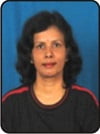Patterns of Interaction among Mono-Cultural English as Second Language Learners
Abstract
ABSTRACT: By exploring the educational pedagogies and classroom discourses, it is the aim of the paper to extend theoretical insights into the way ESL (English as Second Language) writing classrooms might help to make over, negotiate, and manage the linguistic, social and learning identities of the mono-cultural learners in the classrooms. The basic premise of social interdependence theory is that the way interdependence among goals is structured determines how individuals interact, which in turn largely determines outcomes. Research, therefore, has focused on student–student interaction in ESL tertiary writing classroom in an institution of higher learning. The results indicated that mono-cultural learners in an ESL classroom juxtaposed two languages (L1 and L2) and appropriated their bilingualism to learn English language. The results also revealed that group discussions in ESL classrooms in institution of higher learning offered experiential learning whereby learners became more skilled to use suitable choice of words (at times with help of their more capable peers), specifically utilising their bilingual expertise. The end results of this study point out a favourable feature of the discourses of the ESL learners striving for mutual benefits to successfully complete the assigned tasks.
KEY WORDS: Mono-cultural, English as second language, face-to-face interaction, patterns of interaction, and Malay students.

About the Authors: Dr. Nalini Arumugam, Geraldina de Mello and Indrani Muthusamy are Lecturers at the Academy of Language Studies UiTM (MARA Technology University), Melaka Campus, KM 26, Jalan Lendu, 78000 Melaka, Malaysia. They can be reached at: nalini@melaka.uitm.edu.my, geraldine@melaka.uitm.edu.my, and indrani@melaka.uitm.edu.my
How to cite this article? Arumugam, Nalini, Geraldina de Mello & Indrani Muthusamy. (2011). “Patterns of Interaction among Mono-Cultural English as Second Language Learners” in EDUCARE: International Journal for Educational Studies, Vol.4(1) August, pp.11-26. Bandung, Indonesia: Minda Masagi Press owned by ASPENSI in Bandung, West Java; and FKIP UMP in Purwokerto, Central Java, ISSN 1979-7877.
Chronicle of the article: Accepted (June 5, 2011); Revised (July 9, 2011); and Published (August 17, 2011).
Full Text:
PDFReferences
Barnes, D. (1995). “Talking and Learning in Classrooms: An Introduction” in Primary Voices K-6, 3(1), pp.2-7.
Canagarajah, A.S. (2005). Resisting Linguistic Imperialism in English Teaching: Adopting a Critical Perspective on Pedagogy. Oxford, U.K.: Oxford University Press, pp.9-38.
Chapman, K.J. et al. (2006). “Can’t We Pick Our Own Groups? The Influence of Group Selection Method on Group Dynamics and Outcomes” in Journal of Management Education, 30, pp.557-569, doi:10.1177/1052562905284872.
Depaz, I. & Moni, R.W. (2008). “Using Peer Teaching to Support Co-operative Learning in Undergraduate Pharmacology, School of Biomedical Sciences Educational Research Unit, the University of Queensland, Brisbane” in http://www.bioscience.heacademy.ac.uk.journal/vol11/beej-11-8.aspx [accessed at Melaka, Malaysia: 19 December 2010].
Doymus, K. (2008). “Teaching Chemical Bonding through Jigsaw Cooperation Learning” in Research in Science & Technological Education, Vol.26(1), April.
Duran, R.D. (1994). Cooperative Learning for Language Minority Learners. Albany: State University of New York Press.
Ellis, R. (1994). The Study of Second Language Acquisition. Oxford, UK: Oxford University Press.
Ghaith, G.M. (2002). “The Relationship between Cooperative Learning, Perception of Social Support, and Academic Achievement” in Eric Clearinghouse for Social Studies/Social Science Education System, 30, pp.263-273.
Hirst, L.A. & C. Slavik. (2005). Effective Language Education Practices and Native Language Survival. Choctaw, OK: Native American Language Issues, NALI Board of Executors, pp.133-142.
Hull, Darrell M. & Terrill F. Saxon. (2009). “Negotiation of Meaning and Co-Construction of Knowledge: An Experimental Analysis of Asynchronous Online Instruction” in Computers & Education, Vol.52(3), April, pp.624-639. Also available at http://www.sciencedirect.com/science [accessed at Melaka, Malaysia: 14 February 2011].
Iwai, A. (2004). Exploring the Efficacy of Cooperative/Collaborative Learning: The Experience of College ESL University of New Orleans. New Orleans, USA: n.p.
Johnson, D.W. & R.T. Johnson. (1991). Joining Together: Group Theory and Group Skills. Englewood Cliff, NJ: Prentice Hall, Inc., 4th edition.
Johnson, D.W., R.T. Johnson & E.J. Holubec. (1994). “The New Circles of Learning: Cooperation in the Classroom and School” in http://www/.cooperation/.org [accessed at Melaka, Malaysia: 24 July 2011].
Johnson, D.W. & R.T. Johnson. (1999). Learning Together and Alone: Cooperative, Competitive, and Individualistic learning. Singapore: Allyn and Bacon, 5th edition.
Kreie, J., R.W. Headrick & R. Steiner. (2007). “Using Team Learning to Improve Learner Retention” in College Teaching, Vol.55, Iss.2 [Spring], pp.51-57.
Mariam, M.N. (2004). “A Qualitative Study of Group Writing During Process Writing Lessons”. Unpublished Doctoral Dissertation. Kuala Lumpur, Malaysia: University of Malaya.
Mason, K. (2006). “Cooperative Learning and Second Language Acquisition in First-Year Composition: Opportunities for Authentic Communication among English Language Learners, Teaching English in the Two Year College” in ProQuest Education Journals, 34(1), September, pp.52-58.
Nunan, D. (1989). Designing Tasks for the Communicative Classroom. Cambridge, UK: Cambridge University Press.
Paramasivam, M. (2005). “Code Switching among University Putra Malaysian Tamil Learners: A Sociolinguistic Perspective”. Unpublished Doctoral Dissertation. Kuala Lumpur, Malaysia: University of Malaya.
Pica, T. et al. (1996). “Language Learners’ Interaction: How Does It Address the Input, Output, and Feedback Needs of L2 Learners” in TESOL Quarterly, 30(1), pp.59-84.
Reid, J.M. (1987). “The Learning Style Preferences of ESL Learners” in TESOL Quarterly, 21(1), pp.87- 111.
Vygotsky, L.S. (1978). Mind in Society: The Development of Higher Psychological Processes. Cambridge, M.A.: Harvard University Press.
Vygotsky, L.S. (1986). Educational Psychology: Biological and Social Factors in Education. Boca Raton, Florida: St. Lucie Press, pp.47-58.
EDUCARE: International Journal for Educational Studies. Ciptaan disebarluaskan di bawah Lisensi Creative Commons Atribusi-BerbagiSerupa 4.0 Internasional
